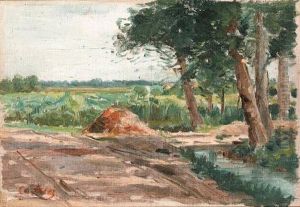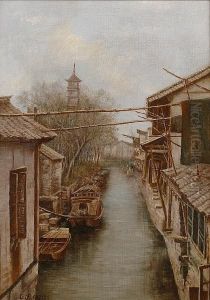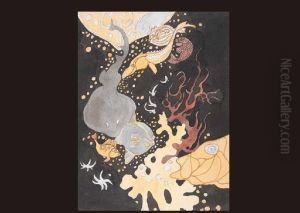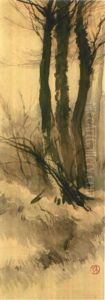Chu Asai Paintings
Chu Asai was a significant figure in the development of Western-style painting (Yōga) in Japan during the Meiji era. Born on October 22, 1856, in Sakura Domain, Shimousa Province (present-day Sakura, Chiba Prefecture), Asai was originally named Kyūsaku, and he later adopted the pseudonym 'Chu'. His family was of samurai status, which provided him with an education that included traditional Japanese and Chinese arts and literature.
Asai developed an interest in Western art early on, and his life took a pivotal turn when he was adopted by his uncle, who was a retainer of the Satsuma Domain. This connection led him to Nagasaki, which was one of the few Japanese cities open to foreign influence during the country's period of self-imposed isolation. There, he began his studies in Western painting techniques under the guidance of the British artist Charles Wirgman and the Italian artist Antonio Fontanesi, who was invited to Japan to help establish a school of Western art.
In 1873, Asai traveled to France to delve deeper into Western painting. He lived in Paris for nearly a decade, where he studied at the École des Beaux-Arts under the tutelage of Raphael Collin and other notable artists. During his stay, Asai absorbed the influences of various art movements such as Impressionism and became acquainted with the work of contemporary European artists. His experiences in France significantly shaped his artistic style, and he became one of the first Japanese artists to master the oil painting technique.
Upon his return to Japan in the early 1880s, Asai brought back with him a wealth of knowledge and experience that he would impart to the next generation of Japanese painters. He took up teaching positions at the Technical Fine Arts School (Kobu Bijutsu Gakko) and the Tokyo School of Fine Arts (Tokyo Bijutsu Gakko), influencing many students with his expertise in Western painting methods.
Asai's own artwork often depicted traditional Japanese subjects, landscapes, and everyday scenes, but rendered with Western painting techniques. He played a crucial role in blending the two worlds, thereby creating a unique style that resonated with the cultural shifts of Meiji-era Japan. Chu Asai’s contribution to the introduction and establishment of Western art in Japan was profound, and he is remembered as a pioneer who helped bridge Eastern and Western artistic traditions.
Chu Asai passed away on December 13, 1907, leaving behind a legacy that continues to be celebrated in Japanese art history. His works are held in various collections, both in Japan and internationally, and they stand as a testament to the cross-cultural exchange of artistic ideas during a transformative period in Japan’s history.



